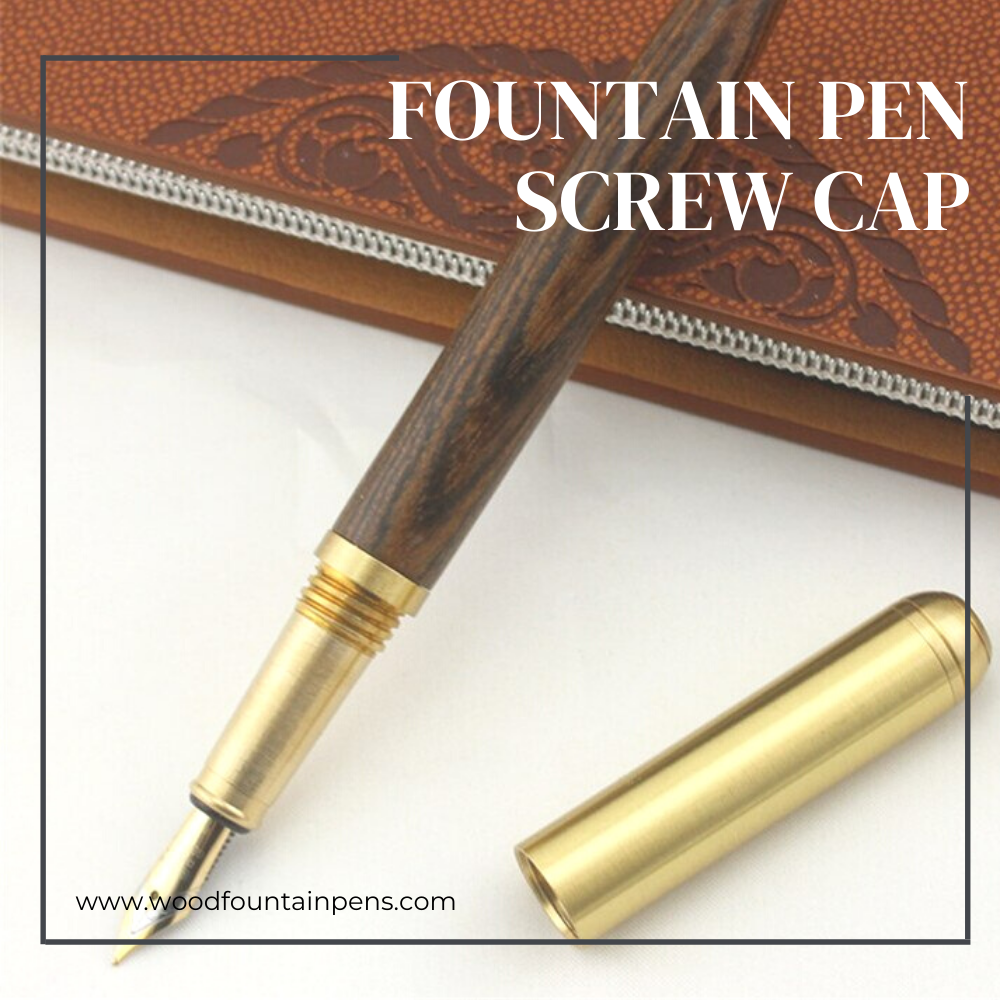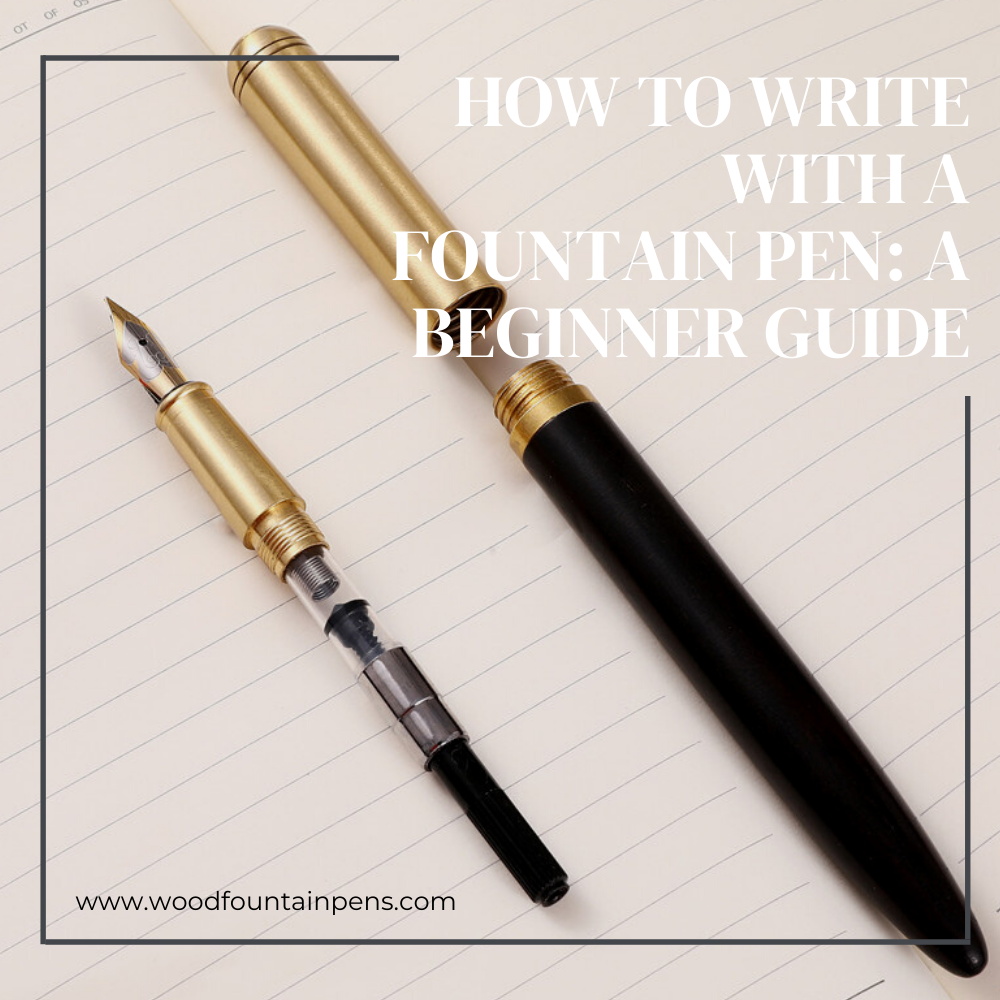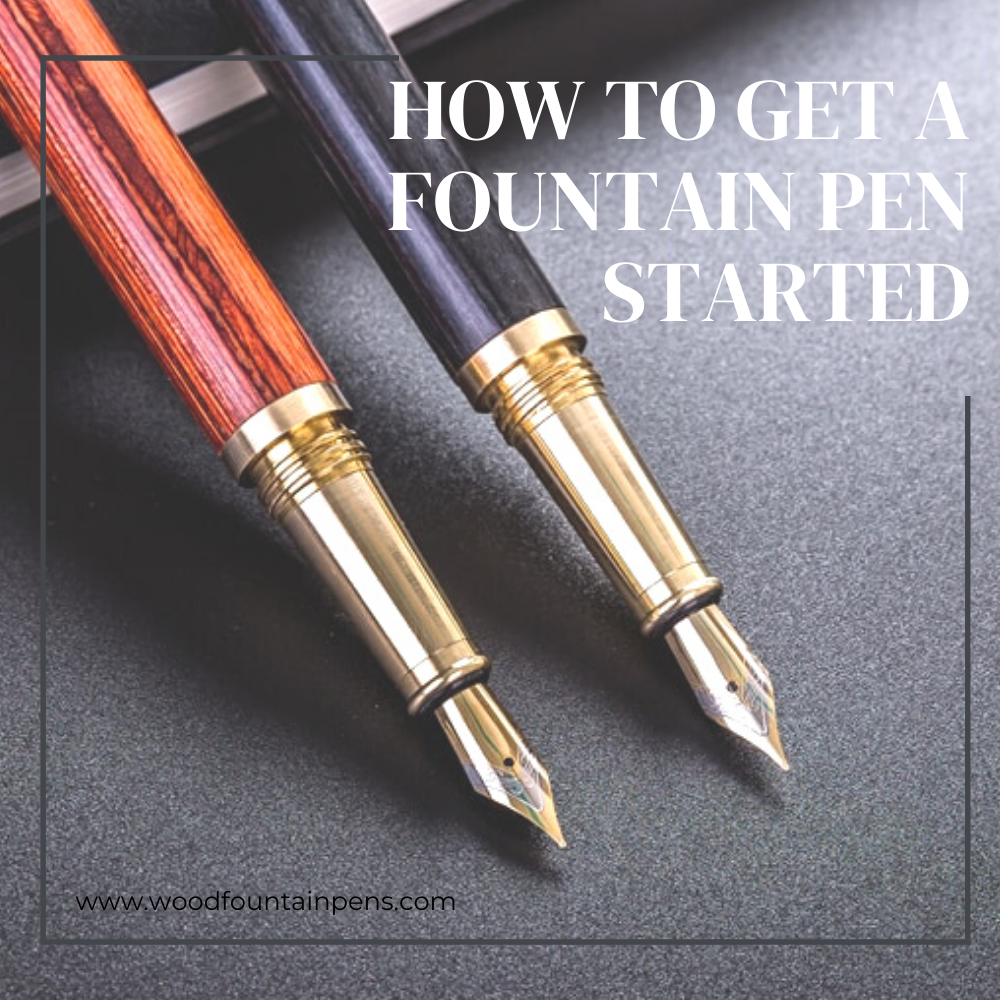
Fountain Pen Screw Cap
Screw cap fountain pen twist on the end of the barrel as you write. These caps have advantages, disadvantages, and factors that can affect whether or you're likely to post the pen.
Some users prefer to post screw cap fountain pens because they add more security during writing and traveling. The posted cap will also even out the pen's distribution of weight; creating a more balanced feeling in the writer's hand. Threading makes the pen less likely to loosen while you're writing. These are the ridged areas that securely attach the cap of the pen; to the pen when it's screwed into place. Screw caps will not come off even with significant movement; like storing the pen in a pocket or a bag during travel.
On the other hand, other users do not post pictures of their fountain pens. Turning the cap through the thread to securely attach the cap can be more time-consuming than some other caps. Regular posting also requires regular cleaning and maintenance to keep your posts performing in top condition. There is also a small margin of error when using the screw-on cap: you can tighten it too much and make the pen more difficult to remove. The inability to replace a pen cap over the nib can lead to damage to the nib.
It can be challenging to find a screw-on pen that will work in both the posted and the unposted position. Many modern fountain pens screw on with a cap to protect the nib, then slip on when the cap is removed. Pens that have screw-cap caps for both capping and uncapping positions are readily available through fountain pen artisans.

Screw cap fountain pen: Pros and Cons
Pros and Cons
- Added security and unlikely to loosen while writing
- Less likely that the screw cap will come undone while traveling.
- Threading needs regular cleaning and upkeep.
- More time-consuming to screw in and out of the cap
- Possibility of the cap being too tight, making the pencil difficult to open.
What if You Don't Post Your Pen?
If you don't consider yourself a fountain pen user, then you'll need to do something with your pen cap while you're writing. Some people hold the pen in their non-dominate hand as they write. This is useful, because the cap may roll away from you or get lost amongst piles and stacks of papers. It is also a good security measure if you let a person borrow your fountain pen, as they cannot carry it off with them without damaging the nib or the ink.
What is fountain pen posting?
The world of fountain pens has enough terminology to give the dictionary a run for its own money. Even if you are already familiar with fountain pens and use one, the jargon may still sound a little strange. When researching or reading reviews, it's common to come across the term 'posting'.
Fountain pen posting describes placing the pen cap on your fountain pen as you write with it.
Cap posting (or putting a fountain pen cap) with ballpoint pens is fairly common. We've often posted caps in elementary school when learning to write, so as to help keep track of the pen's cap.
So how does posting a fountain pen affect your writing? Many factors influence your choice to post your pens, such as the design of the fountain pens and their balance in your hand.

‘Posting' is fountain pen terminology for placing the cap on the back end of the pen. People may also refer to this action as “capping the pen”. When the cap is not on, it is called leaving a fountain pen ‘unposted' or ‘uncapped'.
Occasionally, the style or design of the particular pen affects which way it should be posted. Some fountain pens are made for posting, as placing a cap on the back of a pen will improve the writing experience. Other models are made to be left unposted while you write.
Capping Options for Fountain Pens - screw cap fountain pen
When posted, the cap should securely attach to the end of the fountain pen barrel, opposite of the nib. This makes the writing process effortless and adds balance to the pen. A loose cap may fall off an improperly posted pen, causing the pen to become unstable and making writing more difficult. This can also become an annoying distraction that makes fountain pen-writing less soothing and relaxing.
Several styles of caps offer unique security and style when you write.
Slip-on Caps (screw cap fountain pen)
Slip-on caps simply slide onto the end of the pen's barrel. Some will audibly click into place, while others are fitted with a cap band. The cap band is the ring of metal placed near the bottom of the lid of the pen to prevent the lip of the cap from splitting if it's pushed down too far onto the pen barrel. It is important to keep in mind that there are fountain pens with screw-on caps that snap to the barrel of a pen when posted.
Slip-on caps are convenient, but they come with a set of disadvantages. While slip-on hats are easy to remove when writing with a fountain pen, they may also come off during unwanted moments. The cap can slide out during storage and travel, leading to significant nib damage and the need to replace the nib. Similar to screw caps with a post that can be screwed on so tightly that it can break, the slip-on caps can also be screwed on so forcefully that they can break.
Finally, early model pens may have a slip-on cap but no cap band. There is no indicator to tell you how far the cap should go onto the barrel and it will not ‘click’ into place as other caps do. Vintage fountain pens are usually best left uncapped to avoid damage. However, if the pen is specifically designed to be posted, you can use it with the cap on.
Fountain Pen Slip-On Caps: Pros and Cons
Pros and Cons
- Cap bands stop lids from splitting
- Slide off quickly when you are done writing.
- Can ‘Slip off' while they're being stored more easily than others
- Possibility of breaking the lid of the container by pushing it too far onto the barrel

Clutch Caps
Clutch caps are a type of fountain pen lid that uses a springy piece of material called a clutch ring to hold the pen securely in place. These caps offer the stability of a screw cap with the convenience of a slip-on cap.
The clutch cap is named after the ‘clutching and gripping' of both sides of the fountain pens, making posting and capping more secure than a traditional ‘slip-on' cap. A clutch ring holds a cap in place, reducing the cap's ability to slip off while it's in use or in transport As the clutch ring connects the cap to the chamber, consistent use can loosen it. A loose clutch ring will scratch the barrel of the fountain pen, ruining its beauty.
Fountain Pen Clutch Caps: What are the pros and cons?
Pros Cons
- More security than the traditional slip-on cap.
- Less chance of the cap detaching
- Loose clutch rings can leave scratches on the pen body.
- May lose its grip on the pen over time
Clips
Something else to consider when choosing a fountain pen is whether or not it has a clip on it. A clip is usually long and narrow, sticking out on one side of a cap to keep it from rolling away. It's a useful tool for people with desks who want to set the lid on their non-dominant side, rather than holding the lid with their non-dominant hand while typing.
Posting Your Fountain Pens: The Advantages And Disadvantages (screw cap fountain pen)
It's up to you whether or not to post. There are several advantages and disadvantages to consider when deciding whether posting works for your style of writing.
Improved Balance
Posting a pen makes the end of its barrel longer and heavier. It helps prevent excess weight from building up on your pen's nib, which makes writing easier. The lighter weight makes it easier to write with. A balanced fountain pen is a good choice for beginners who want to learn how to write with a fountain pen. New users often need some time to get used to the different weights of fountain pens and other types of writing tools.
Increased Pen Weight
Posting while holding the phone helps people who are shaking their hands because they get more control. Those with larger hands may prefer using bigger fountain pens. This makes the pen lighter and shorter, so it fits better into the writer's hand.
You Won't Lose Your Cap (or Your Pen)
People who tend to keep their desk or workspace messy often choose to put the fountain pens away so they don't lose their lids. If you're willing to share your fountain pens with others, then don't post them online, because almost certainly they will be returned to you. If someone takes your pen and doesn't realize it's leaking, they will remember to bring it back when it starts to leak.
Added Security
Have you ever watched in horror when your fountain pen lands straight onto the nib, watching in terror as the ink splatters everywhere? Posting will prevent the pen from being damaged if you drop it. When a fountain pen is dropped from a height, the heavier side (the one with the cap) will fall to the ground first, rather than damage the delicate nib.
Potential Damage to Exterior Pen Body
People may not post photos of their fountain pens to preserve the appearance of their barrels. Wearing loose-fitting hats with sharp edges may cause scratches.
Uncomfortable Grip
Some people, especially if they have large hands or hold the fountain pen further away from the fountain pen tip, may experience problems with how their arm lies on the fountain pen when writing. Their grip may be too large to comfortably fit into the posted cap, which feels bulky and awkward while writing.

A Final Word
It's up to you whether you want to cap your pen or not. Think about things like aesthetics, whether posting will damage your pen (or cause ink to leak), and how the cap affects your writing experience.
If you do post frequently, consider buying a specific type of fountain pen, like a clutch cap or screw cap fountain pen. This prevents unwanted damage from occurring to the pen and ensures that the pen is balanced and steady as you write with the cap posted.
As for me, I keep a fountain pen posted while I'm writing so I can see the ink while I'm writing. It feels too light for me to hold it without posting it. There is a big difference between the control I have when I write and the control I have when someone else writes for me. You can choose what to write, when to write it, how to write it, and even who to write it for. Posting prevents losing your lid, which is a problem for someone who has an office that is a little cluttered, like me.
My favorite fountain pen tip is a clutch tip. They're slightly more secure than slip-on caps and are easier to secure them in place than screw caps are, but they take a little longer to put on than screw caps do.
Use your fountain pen in whichever cap position feels most comfortable for you!
FAQs
What is fountain pen posting?
‘Posting' is a fountain-pen term for putting the cap on the back of the pen.
What is Fountain Pen Posting?
Fountain pen posting describes putting the pen cap on a pen as you use it.
What should I do when I get a fountain pen cap?
When you post a picture of your finished product, the cap should be securely attached to the end of the pen barrel, opposite of where the nib is located.
What is a Fountain Pen screw cap?
Fountain pens use a screw cap that twists onto the end of the barrel.
What are the benefits of using a screw?
Threading makes the pen less likely to loosen while writing.
What is the difference between a screw-on and a slip-on?
Attaching the cap by turning the cap through the thread can take longer than attaching some other caps.
What is a Slip-On Cap?
Slip-on caps simply slide onto the end of the pen's barrel.
What are the common fountain pen problems?
The cap can easily slip off during storage and transport. If this happens, it can cause a significant amount of nib wear and replacement.







Leave a comment
This site is protected by hCaptcha and the hCaptcha Privacy Policy and Terms of Service apply.